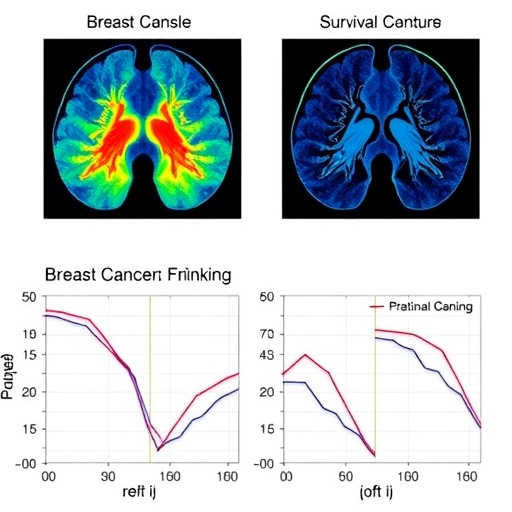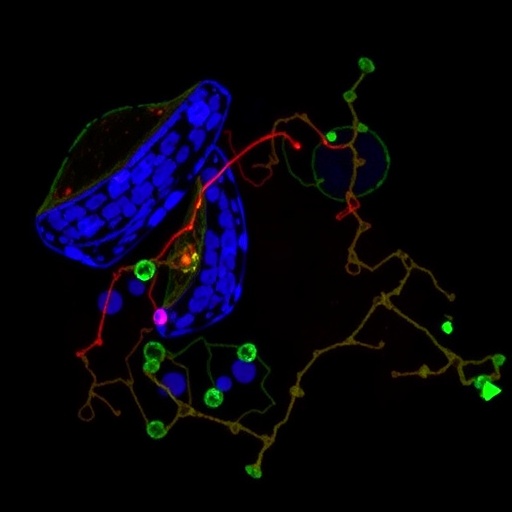
Credit: Marcelo Leal
Blood pressure measurements in children and adolescents should be taken from both arms after new research showed substantial differences could be seen depending on which arm was used.
The study, led by the Murdoch Children’s Research Institute (MCRI) and published in the Journal of Hypertension, found even a small difference in blood pressure measurements between arms could lead to a wrong diagnosis.
MCRI PhD candidate and study lead author Melanie Clarke said this was the first study worldwide to determine the size and frequency of inter-arm blood pressure differences in children and adolescents.
The study involved 118 participants, aged 7-18 years, recruited from a cardiology day clinic in Melbourne. It found in healthy children one in four had an inter-arm difference that could lead to misdiagnosis. This figure doubled in those with a history of aortic surgery, which is often performed in infants with congenital heart disease.
Ms Clarke said the high rates of misclassification occurred because the difference between a normal and hypertensive recording was so small.
“Misdiagnosis could occur when the blood pressure difference is greater than about 5 mmHg, but one in seven healthy children had a difference greater than 10 mmHg, which could lead to a failure to identify stage one or two hypertension,” she said.
“Given blood pressure measured in a child’s right and left arm are often different, it’s important to take measurements in both arms to make a correct diagnosis. Accurate blood pressure assessment in kids is critical for identifying the potential risk for damage to the heart and blood vessels, which can lead to early-onset cardiovascular disease.”
High blood pressure is one of the primary risk factors for heart disease and stroke, the leading causes of death worldwide. Globally, an average of three children per school classroom have elevated blood pressure or hypertension (almost 14 per cent).
MCRI Associate Professor Jonathan Mynard said children with high blood pressure were more likely to develop hypertension as adults at a relatively young age, and the damage it caused to the heart and blood vessels started silently in childhood.
“Children with high blood pressure, many of whom appear to be healthy, have a greater risk of developing hypertension in adulthood, a major risk factor for cardiovascular disease,” he said.
The European Society of Hypertension and the American Academy of Pediatrics recommend blood pressure be measured in children and adolescents at least once a year. However, Associate Professor Mynard said in Australia it wasn’t common practice for GPs to measure blood pressure in children or in both arms.
“We know high blood pressure is common in adults but many people don’t realise how common it is in kids too,” he said. Parents can help by encouraging their kids to eat a healthy diet that is low in salt and sugary drinks, and high in fruit, vegetables, and whole grains, and to engage in lots of physical activity.
“More work needs to be done to draw attention to the problem of childhood hypertension and its long-term consequences. Australia would benefit from having its own set of clinical guidelines addressing high blood pressure in children, including how to obtain accurate measurements and avoid misclassification.”
Heart Foundation Chief Medical Advisor and cardiologist Professor Garry Jennings said: “There are good clinical reasons for measuring blood pressure in both arms in children and adolescents in the evaluation of hypertension and this study provides clear support for this approach.”
Researchers from the University of Melbourne, The Royal Children’s Hospital and the Slippery Rock University in Pennsylvania also contributed to the findings.
###
Publication: Melanie M. Clarke, Hilary A. Harrington, Jonathan P. Glenning, Diana Zannino, Michael E. Holmstrup, Brock T. Jensen, Joseph J. Smolich, Michael M.H. Cheung, and Jonathan P. Mynard,’ Magnitude and significance of inter-arm blood pressure differences in children and adolescents,’ Journal of Hypertension. DOI: 10.1097/HJH.0000000000002797
*The content of this communication is the sole responsibility of MCRI and does not reflect the views of the NHMRC.
Available for interview:
Dr Jonathan Mynard, MCRI Team Leader Heart Research
Melanie Clarke, MCRI PhD candidate
Professor Garry Jennings, Heart Foundation Chief Medical Advisor and cardiologist
Funding: The study was supported by grants from the National Health and Medical Research Council of Australia (APP1128516). J.P. Mynard is supported by a co-funded R.D. Wright Career Development Fellowship from the National Health and Medical Research Council of Australia (APP1143510) and Future Leader Fellowship from the National Heart Foundation of Australia (101866). The Heart Research Group is supported by the Victorian Government’s Operational Infrastructure Support Program, RCH 1000 and Big W.
Media Contact
Bridie Byrne
[email protected]
Original Source
https:/
Related Journal Article
http://dx.





